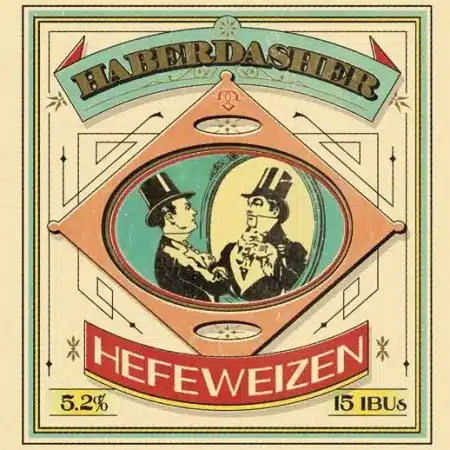 What is a Hefeweizen?
What is a Hefeweizen?
Hefeweizens are a type of weissbier or white beer, also commonly referred to as weizenbier, or wheat beer. Translated from German, hefeweizen means “yeast wheat,” an apt description as they are the two defining ingredients for the style. Malted wheat contains higher levels of protein, contributing to hefeweizen’s trademark cloudy appearance, creamy texture and pillowy head, though the true essence of this style comes from the addition of yeast, imparting notes of banana, clove, bubblegum, vanilla and black pepper. This beer does not showcase hops, and hop presence should be very minimal.
Sumerian records reveal that its citizens brewed beer with spelt, a variety of wheat, more than 8000 years ago. There is also evidence to support Egyptian civilizations making beer with emmer, the earliest precursor to modern wheat. Little or no records exist for the next 2000 years, until the Medieval period when wheat ales became a popular Bavarian brew.
A Middle Age Bier Craze
From the late 15th century, wheat beer was brewed throughout Bavaria, and across most of Germany as well. The demand for wheat became so high that it began outstripping supply, resulting in a serious grain shortage. Compounded by war and crop failure, there was limited wheat for bread, and available bread was becoming prohibitively expensive.
In 1516, Reinheitsgebot, also known as the Bavarian Purity Law, was enacted with the now famous decree that beer be made exclusively from barley, water and hops. Yeast was not mentioned in the statement, as its precise role in alcohol production was not yet known. At the time, yeast was knowingly used to make beer, but was likely seen as a fixture of the brewing process that was often transferred from one batch to another.
The purpose of Reinheitsgebot was to ensure that all available wheat was reserved for bread production, effectively governing the prices of bread and beer. The other important implication was to set a health and safety standard for beer, as people were getting sick from some of the addition of certain plants and herbs. As the addition of wheat in beer was now forbidden, and it was no longer legal to brew weissbier.
A Royal Loophole
Apparently, the ruling family of Bavaria, the House of Wittelsbach, were not going to let a few rules get in the way of their beer drinking. In 1520, with their royal influence and a hefty payoff, a loophole was created allowing a single brewery, operated by the Dukes of Degenberg, to produce weissbier. Nearly a century later, the last remaining (and heirless) Degenberg died. Under feudal law, the brewery was transferred to the Wittlesbach family, granting them exclusive rights to brew wheat beer.
The Wittlesbachs began opening wheat beer breweries all over Bavaria, their beer sales initially a big boon to Bavarian economy. By the late 1700s, the meteoric rise of dark lagers led to a significant decline in wheat beer sales, and the family started franchising out to monastic brewhouses. In 1872, after the wheat beer fad all but faded away, Georg Schneider negotiated the rights to this royal brew. The Schneider brewery still brews weissbier in Munich, with wheat beer sales accounting for nearly a quarter of all beer sold in Bavaria.
With an influx of German immigrants to the US during the 19th century, hefeweizens slowly gained an American presence, though it wasn’t until the 1980s that weissbier began to pique the interest of craft brewers. At the time, filtered beers were highly regarded and hazy beer was perceived as being lazy. Now, amidst a North American haze craze, there is no shortage of excellent wheat beer to try. Just remember, hefeweizens are light, refreshing and best consumed fresh!
(Leah is a Toronto based freelance writer as well as the Beer Boss and a server at C’est What)


